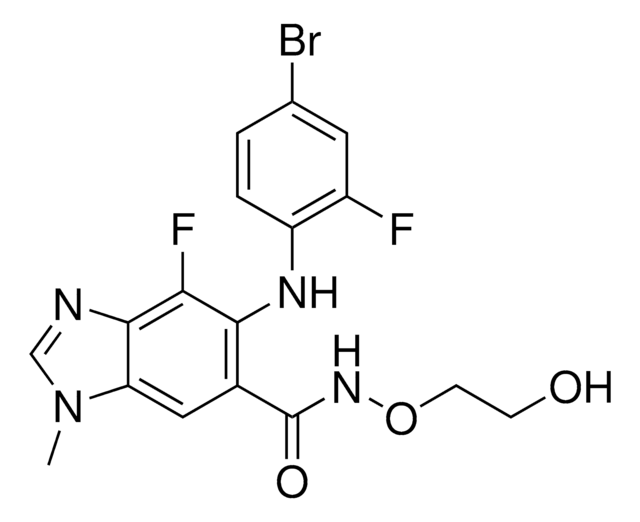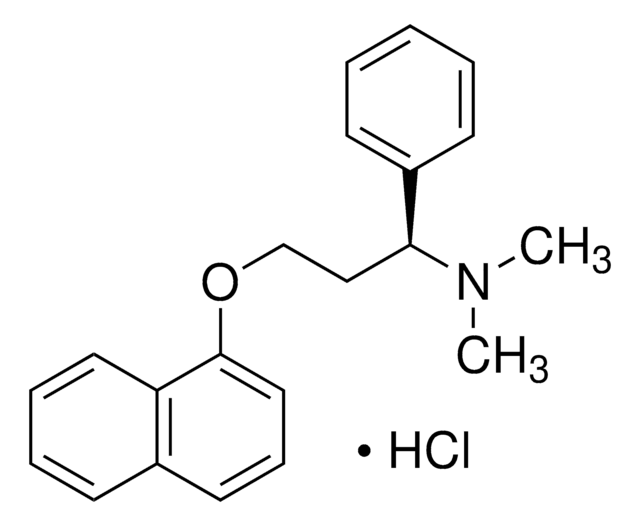A2736
Anastrozole
≥98% (HPLC)
Synonym(s):
2;2"-[5-(1H-1;2;4-Triazol-1-ylmethyl)-1, 3-Phenylene]bis(2-methyl-propiononitrile, Arimidex, ICI-D1033, ZD1033, a,a,a′,a′-Tetramethyl-5-(1H-1,2,4-triazol-1-ylmethyl)-1,3-benzenediacetonitrile
About This Item
Recommended Products
Quality Level
Assay
≥98% (HPLC)
form
solid
solubility
DMSO: 40 mg/mL
originator
AstraZeneca
storage temp.
room temp
InChI
1S/C17H19N5/c1-16(2,9-18)14-5-13(8-22-12-20-11-21-22)6-15(7-14)17(3,4)10-19/h5-7,11-12H,8H2,1-4H3
InChI key
YBBLVLTVTVSKRW-UHFFFAOYSA-N
Looking for similar products? Visit Product Comparison Guide
Application
- as a positive control in DNA fragmentation (ladder) assay
- to investigate its effects along with extra virgin olive oil and its major fatty acid component (omega-9 OA) in estrogen receptor positive mammary adenocarcinoma cells
- to study its effects on viability, cell proliferation and apoptosis in Glioblastoma multiforme model in vivo
Biochem/physiol Actions
Features and Benefits
Signal Word
Danger
Hazard Statements
Precautionary Statements
Hazard Classifications
Acute Tox. 4 Oral - Repr. 1B
Storage Class Code
6.1C - Combustible acute toxic Cat.3 / toxic compounds or compounds which causing chronic effects
WGK
WGK 3
Flash Point(F)
Not applicable
Flash Point(C)
Not applicable
Certificates of Analysis (COA)
Search for Certificates of Analysis (COA) by entering the products Lot/Batch Number. Lot and Batch Numbers can be found on a product’s label following the words ‘Lot’ or ‘Batch’.
Already Own This Product?
Find documentation for the products that you have recently purchased in the Document Library.
Customers Also Viewed
Our team of scientists has experience in all areas of research including Life Science, Material Science, Chemical Synthesis, Chromatography, Analytical and many others.
Contact Technical Service














